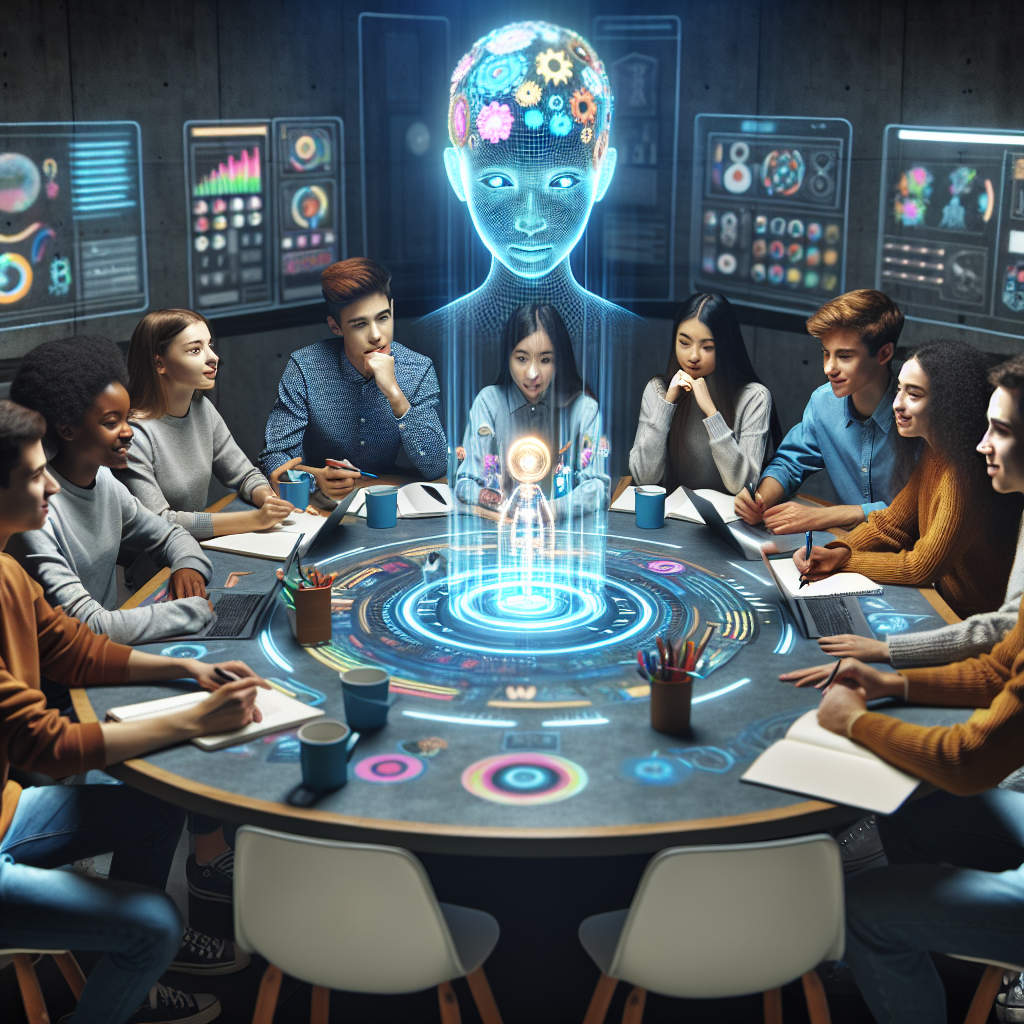Artificial Intelligence (AI) and Project-Based Learning (PBL) are two emerging trends in education that have the potential to revolutionize the way students learn and teachers teach. By combining the power of AI with the innovative approach of PBL, educators can create a dynamic learning environment that enhances collaboration, creativity, and critical thinking skills in students.
AI technology has made significant advancements in recent years, with applications ranging from self-driving cars to personalized learning platforms. In the field of education, AI can be used to analyze student data, create personalized learning experiences, and provide real-time feedback to students and teachers. By incorporating AI into PBL, educators can leverage this technology to enhance the learning experience for students and promote deeper engagement with course material.
PBL is an instructional approach that emphasizes learning through hands-on, real-world projects. In a PBL classroom, students work collaboratively to solve complex problems, conduct research, and present their findings to an authentic audience. This approach encourages students to take ownership of their learning, develop critical thinking skills, and apply their knowledge in practical ways.
By integrating AI into PBL, educators can enhance collaboration and creativity in the following ways:
1. Personalized Learning Experiences: AI technology can analyze student data to create personalized learning experiences tailored to each student’s strengths, weaknesses, and learning preferences. By incorporating AI into PBL projects, educators can provide students with individualized support and feedback, helping them to reach their full potential.
2. Real-Time Feedback: AI can provide real-time feedback to students as they work on PBL projects, helping them to stay on track and make adjustments as needed. By receiving immediate feedback from AI-powered tools, students can improve their problem-solving skills, critical thinking abilities, and creativity.
3. Enhanced Collaboration: AI technology can facilitate collaboration among students by providing them with tools for communication, project management, and data analysis. By working together on PBL projects using AI-powered platforms, students can develop teamwork skills, learn from each other’s strengths, and create innovative solutions to complex problems.
4. Data Analysis: AI can analyze large amounts of data to identify trends, patterns, and insights that can inform the design and implementation of PBL projects. By leveraging AI technology to analyze student performance data, educators can identify areas for improvement, tailor instruction to meet individual student needs, and track the impact of PBL projects on student learning outcomes.
5. Creativity and Innovation: AI can inspire creativity and innovation in students by providing them with access to cutting-edge technologies, tools, and resources. By incorporating AI into PBL projects, educators can empower students to think outside the box, experiment with new ideas, and develop innovative solutions to real-world problems.
Incorporating AI into PBL projects can also raise some questions and concerns among educators, students, and parents. Here are some frequently asked questions (FAQs) about AI and PBL:
1. How can AI be used to enhance collaboration in PBL projects?
AI technology can facilitate collaboration among students by providing them with communication tools, project management platforms, and data analysis capabilities. By leveraging AI-powered tools, students can work together more effectively, share ideas, and create innovative solutions to complex problems.
2. What are the benefits of using AI in PBL projects?
Using AI in PBL projects can enhance collaboration, creativity, and critical thinking skills in students. AI technology can provide personalized learning experiences, real-time feedback, and data analysis capabilities that help students to achieve better learning outcomes and develop 21st-century skills.
3. What are the challenges of integrating AI into PBL projects?
Integrating AI into PBL projects may raise concerns about data privacy, equity, and accessibility. Educators must consider these factors when implementing AI-powered tools in the classroom to ensure that all students have equal access to learning opportunities and that their data is protected.
4. How can educators ensure that AI is used ethically in PBL projects?
Educators must establish clear guidelines and policies for the ethical use of AI in PBL projects, including data privacy, bias detection, and transparency in decision-making. By promoting ethical use of AI technology, educators can create a safe and inclusive learning environment for all students.
5. How can parents support their children’s learning with AI and PBL?
Parents can support their children’s learning with AI and PBL by encouraging them to explore new technologies, experiment with creative ideas, and collaborate with their peers on projects. By fostering a growth mindset and a positive attitude towards learning, parents can help their children succeed in the digital age.
In conclusion, AI and PBL offer exciting opportunities for educators to enhance collaboration and creativity in the classroom. By integrating AI technology into PBL projects, educators can create a dynamic learning environment that empowers students to work together, think creatively, and solve complex problems. By addressing questions and concerns about AI and PBL, educators can ensure that all students have equal access to learning opportunities and that their data is protected. With the right tools, resources, and support, educators can harness the power of AI to transform the way students learn and teachers teach in the 21st century.

